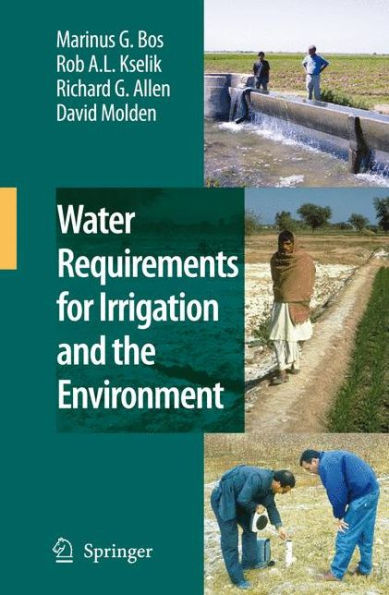This book discusses all components of the water balance of an irrigated area; evapotranspiration (Ch.2), effective precipitation (Ch.3) and capillary rise from the groundwater table (Ch.4). Chapter 5 then combines all components into a water management strategy that balances actual evapotranspiration (and thus crop yield) with the groundwater balance of the irrigated area (for a substainable environment). Chapter 6 presents CRIWAR 3.0, a simulation program that combines all water balance components into a single simulation procedure. The chapter describes the use of the CRIWAR software for developing water requirement tables and other useful information based on the selected water management strategy. This version greatly expands upon the capabilities of previously published programs.
This book discusses all components of the water balance of an irrigated area; evapotranspiration (Ch.2), effective precipitation (Ch.3) and capillary rise from the groundwater table (Ch.4). Chapter 5 then combines all components into a water management strategy that balances actual evapotranspiration (and thus crop yield) with the groundwater balance of the irrigated area (for a substainable environment). Chapter 6 presents CRIWAR 3.0, a simulation program that combines all water balance components into a single simulation procedure. The chapter describes the use of the CRIWAR software for developing water requirement tables and other useful information based on the selected water management strategy. This version greatly expands upon the capabilities of previously published programs.

Water Requirements for Irrigation and the Environment
174
Water Requirements for Irrigation and the Environment
174Hardcover(2009)

Product Details
| ISBN-13: | 9781402089473 |
|---|---|
| Publisher: | Springer Netherlands |
| Publication date: | 12/03/2008 |
| Edition description: | 2009 |
| Pages: | 174 |
| Product dimensions: | 6.10(w) x 9.25(h) x 0.02(d) |
